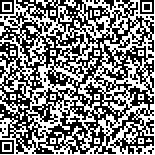下载中心
优秀审稿专家
优秀论文
相关链接
摘要

海洋溢油与烃渗漏是资源与环境遥感关注的重要方向之一。光学遥感在该领域的理论与应用研究表明:(1)光学遥感探测的分类目标已经明确,即溢油污染形成的海面油膜、黑色浮油与油水混合物,海底烃渗漏形成的海面油膜与近海表大气碳氢化合物气体异常;(2)这些目标对入射光具有不同的光学作用过程(如反射、吸收、散射、干涉等),会产生不同的光学响应特征,是光学遥感识别、分类与定量估算的理论基础;(3)在实际应用中,目标介质面(不同类型、折射率与粗糙度的油面与海面)的菲涅尔反射差异,有利于目标探测的同时,也给目标识别分类与定量估算带来诸多不确定性影响。光学遥感技术在本领域的应用特点与优势逐渐清晰,但依然面临巨大的挑战,今后的研究趋势也主要集中于以下几个方面:光学传感器的可探测性,典型目标的光学响应特征,定量遥感模型与参数查找表,目标的光谱与空间尺度响应,实地测量等。随着研究的深入,光学遥感技术必能以新的视角为海洋溢油与烃渗漏目标的实时监测、识别分类与定量评估提供更好的解决方案。
The remote detection and quantification of oil spills and hydrocarbon seepage represent a key research direction in marine environment monitoring and resource management. Passive optical remote sensing using sunlight has been used for several decades, and significant progress has been made in recent years. It exhibits the following characteristics.(1)The optical detection and classification of oil spills and hydrocarbon seepage are based on their different optical properties from oil-free water. These properties include oil slicks of different thicknesses, oil-water mixture(i.e., oil emulsion of different concentrations), thick floating oil, and thin oil slicks, and hydrocarbon gas from seabed hydrocarbon seepage. (2) These different oil and hydrocarbon forms undergo different optical processes when interacting with light because they can reflect, absorb, and scatter the incident light, resulting in different levels of optical contrast from surrounding oil-free water and thus providing a theoretical basis for their detection, classification, and quantification through optical remote sensing. (3) The Fresnel reflection of different surfaces, such as oil-free water or oiled surfaces with different refractive indexes and roughness, helps detection but presents challenges on classification and quantification. This paper provides a brief review of the characteristics of marine oil spills and hydrocarbon seepage in their various forms, and discusses the advantages and challenges in their optical detection and quantification. Many space borne and airborne multi/hyper-spectral or multi-angle optical sensors, such as MODIS, MERIS, AVIRIS, MISR, Hyperion, and Landsat, have been used to detect, quantify, and map oil spills or natural seepage, as shown in the most recent oil spill disasters and natural seepage estimates in the Gulf of Mexico. In these applications, lab-based experimental results provide optical models and key parameters to improve the quantification of surface oil from remote sensing images. Environmental conditions, such as sea state and solar/viewing geometry from a real spill case, can be dramatically different from those in the lab experiments. Thus, applying lab-based results to aquatic environments becomes technically challenging. Significant process has been made in understanding the oil-water spatial and spectral contrasts of these different oil forms under different environmental conditions. However, some key issues still need to be investigated further. These issues include sensor capability (i.e., spectral, spatial, and radiometric resolutions), relationship between spectral/spatial oil-water contrast and oil type and thickness, and optical models for improved detection and quantification at various scales. The fundamental difficulty in determining oil thickness or volume in the field needs to be overcome to refine lab-based models and validate remote sensing estimates. Nevertheless, optical remote sensing is expected to make continuous progress to eventually overcome these challenges and thereby play an increasingly important role in assessing marine oil spills and hydrocarbon seepage.

